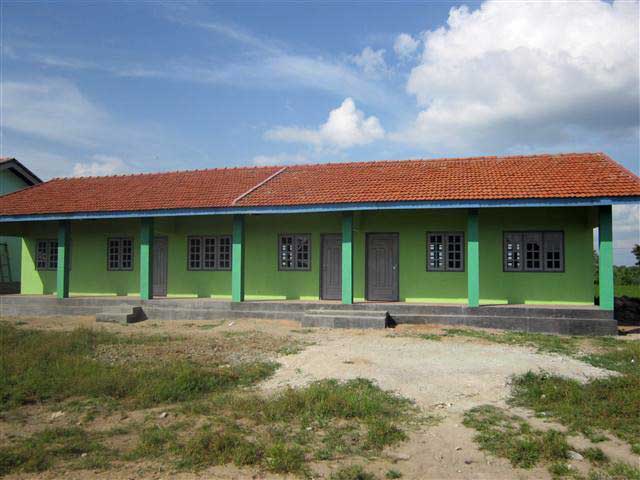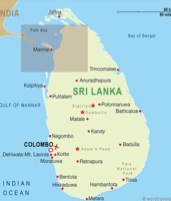Kondachchi School Established August, 2011


Kondachchi Community Profile
The village of Kondachchi is located in Mannar District, 340 kilometers north of Colombo. This region was greatly affected by war, and as a result many of the roads are in poor condition. Due to the neglected condition of the roads, it takes about nine hours to reach the village from Colombo.
This district, one of five administrative districts in the Northern Province, is located in northwestern Sri Lanka. It covers 2,002 square kilometers, approximately 3% of the total land area of Sri Lanka. Geographically, the bulk of Mannar lies on the mainland within the arid and dry zone. High temperatures and low rainfall characterize the climate. The monthly temperatures range between 26.5°C and 30.0°C, with highs normally recorded between May and August. Mannar receives nearly 60% of its rainfall during the northeast monsoon, which lasts from October through December. The land area is relatively flat and sits at low elevations. Across the region's gently undulating terrain, rainwater is stored in tanks and used for irrigation of arable land. Crop cultivation (primarily paddy), fisheries and animal husbandry support most people in Mannar. Employment opportunities in the district are highly seasonal, and there are no institutional facilities for tertiary education. The district is inhabited by members of various communities, though the Tamil- speaking community is the most prevalent.
The last thirty years of conflict in the region have resulted in the displacement and destruction of large segments of the area's population. War has destroyed the region's infrastructure, displacement has left communities without homes, and the jungle has swallowed formerly populated areas. The residents of Kondachchi are very poor due to the decades-long war. Displaced on multiple occasions, these villagers have lost their houses, their belongings, and many of their loved ones as well. The shelters consist of temporary tin sheet sheds built by the government or NGOs. The villagers are dependent farming as their main source of income and many of them work for daily wages. Drinking water is obtained from dug wells, and the village is without an electricity supply. Presently the government is involved in rebuilding the village infrastructure.
This district, one of five administrative districts in the Northern Province, is located in northwestern Sri Lanka. It covers 2,002 square kilometers, approximately 3% of the total land area of Sri Lanka. Geographically, the bulk of Mannar lies on the mainland within the arid and dry zone. High temperatures and low rainfall characterize the climate. The monthly temperatures range between 26.5°C and 30.0°C, with highs normally recorded between May and August. Mannar receives nearly 60% of its rainfall during the northeast monsoon, which lasts from October through December. The land area is relatively flat and sits at low elevations. Across the region's gently undulating terrain, rainwater is stored in tanks and used for irrigation of arable land. Crop cultivation (primarily paddy), fisheries and animal husbandry support most people in Mannar. Employment opportunities in the district are highly seasonal, and there are no institutional facilities for tertiary education. The district is inhabited by members of various communities, though the Tamil- speaking community is the most prevalent.
The last thirty years of conflict in the region have resulted in the displacement and destruction of large segments of the area's population. War has destroyed the region's infrastructure, displacement has left communities without homes, and the jungle has swallowed formerly populated areas. The residents of Kondachchi are very poor due to the decades-long war. Displaced on multiple occasions, these villagers have lost their houses, their belongings, and many of their loved ones as well. The shelters consist of temporary tin sheet sheds built by the government or NGOs. The villagers are dependent farming as their main source of income and many of them work for daily wages. Drinking water is obtained from dug wells, and the village is without an electricity supply. Presently the government is involved in rebuilding the village infrastructure.
Kondachchi School Project

The start of construction
The existing school serves students in grades one through five. Presently, there is only one semi-permanent building in which the classes are conducted. During the war the buildings were totally damaged so the government has built a semi-permanent structure to accommodate the students. However, the building is unsafe and poorly lighted. Due to the poor infrastructure, some parents do not send their children to school. As part of the resettlement program, officials of the Government of Sri Lanka asked for Room to Read's support in building a new classroom block in this village.
The new classroom block is a spacious 1,500-square-foot building with lots of light and good ventilation. This is a single-story building with three classrooms and a storage room. Room to Read provided 20 desks and 40 chairs for the primary school students, 80 desks and 80 chairs for the secondary school students, and 3 tables and 3 chairs for the teachers. The new classroom block is painted to match the existing building at this school. It is an attractive addition to this community and garners a lot of positive attention.
The new classroom block is a spacious 1,500-square-foot building with lots of light and good ventilation. This is a single-story building with three classrooms and a storage room. Room to Read provided 20 desks and 40 chairs for the primary school students, 80 desks and 80 chairs for the secondary school students, and 3 tables and 3 chairs for the teachers. The new classroom block is painted to match the existing building at this school. It is an attractive addition to this community and garners a lot of positive attention.

Open and bright classrooms!
During the war time, this school had been functioning without any facilities, and lots of families were displaced from this village because existing buildings were damaged by war. After the war finished, we didn't have enough spaces for learning, students had no books to read, and none of the existing buildings had partitioned classrooms.
It was very difficult to conduct class, and as a result, the displaced families didn’t want to come back to their homes. Therefore, the teachers have found it very difficult to teach the existing students. During rainy days, we could not conduct classes because these are very low land areas, and most of the roof tiles were damaged by water leakage. Finally, we requested that the Department of Education help us address these issues. However, they had other priorities, and our request was turned down. But when they heard that Room to Read was helping to construct the school building, they identified our need and agreed to help us. With the help, support, and guidance of Room to Read, we have been able to complete a building with modern facilities. And for this, we thank Room to Read and the donors who have supported unconditionally. May God bless Room to Read and the donors to help needy communities.
Mr. M.K.M. Lafir, the school principal and president of the School Construction Committee
